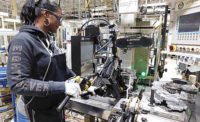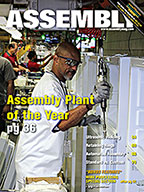Operators use the system every day for tasks such as following the very detailed build steps; correct part usage; correct tool usage; measurement entry and validation; and nonconformance data entry. The ShopFloor system will not allow a machine to be sent to the next build step if it has not been completely finished and validated in the previous step.
Operators can also use the computers located throughout the plant to find out news such as the birth of a coworker's baby. In addition, the computers provide continual updates that let workers know how Xerox stock is performing on the New York Stock Exchange.
The ShopFloor system is maintained by planner analysts and manufacturing engineers to ensure that assembly instructions are kept up-to-date and correct, which eliminates variation between machine build. Also included within the system is a full suite of reports, such as weekly quality reports and assets and their scanned serial numbers.
"A key part of the ShopFloor system is an internal web page that allows the engineers and support staff to communicate directly, in real-time, with all operators on the floor," says Joao Borges, vice president of worldwide production systems manufacturing. "Implementation of the ShopFloor system has provided many benefits, including: improved quality by allowing us to provide very detailed assembly instructions to the operators; better control of machine configuration changes; and improved traceability."
ShopFloor also incorporates closed-loop test routines that ensure effective product testing. Final configuration verification, a computerized system enabling one operator to run three machines at one time, has delivered a productivity improvement of 50 percent.
The computer system helps operators test critical machine parameters and adjust critical settings throughout the assembly process. For instance, it is used to measure the developer donor roll gap.
"This is the distance between the eight developer donor rolls and the upper and lower developer backer bars on the photoreceptor module," says Borges. "The gap is controlled by piece part quality and there are no settings associated with it. The donor roll gap directly relates to image quality. The test fixture that is used to measure the gap uses four noncontact gap sensor assemblies and the fixture is directly linked to the ShopFloor system. The integration with the ShopFloor system ensures that the machine will not progress to the next build station unless all measurements are within specification."




